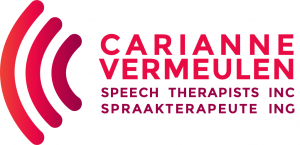What speech and language development can you expect to see at this age?
- Your child begins to understand concepts such as longer/large when a contrast is given
- Follows two-step related instructions without cues (e.g. “Give the dog a bone and some milk.”)
- Begins to pay attention to specific print (e.g. the first letter of his/her name)
- Your child has an expressive vocabulary of 1000- 1200 words and uses 4-5 word sentences consistently
- Answers simple questions (e.g. “What do you do when you’re hungry?”)
- Uses some plurals (e.g. cats) and past tense forms (e.g. jumped)
- Uses adjectives to describe things (e.g. big apple; naughty dog)
- Uses negative forms (e.g. no, not, can’t, don’t, won’t)
- Uses more pronouns (e.g. they, us, hers, his, them, her, our, him, myself, yourself, their)
- Uses position concepts (e.g. under, in front, around)
- Participates in rhyming games
- Expresses ideas and feelings
Activities to help stimulate your 3-4 year old child’s speech and language development
Read books every day.
Teach your child to listen and follow instructions by playing games. For example: “Simon says stamp your feet”; “Simon says clap your hands”.
Teach your child to talk. Ask questions that allow your child to think and talk (e.g. “What do you want to eat for lunch.”).
Encourage your child to tell stories. Teach your child about the following concepts: characters, beginning, climax and ending of the story.
Teach your child to think and reason. Play “Let’s guess.” Show your child an image of a monkey and some other animals. Then say: “Guess what I am thinking of. It sits in a tree, eats bananas and has a long tail”.
Repeat new words over and over.
Talk about things he does or experiences. Make a habit of naming as many things as possible as you proceed; it will expand your child’s vocabulary and field of experience.
Follow your child’s lead. Free play is extremely important for your child’s development. Let your child take the lead when you play games. You could guide your child while playing with toys (e.g. “What is the horse saying?” “What did the sheep do?”)
Introduce position concepts (prepositions). Put your child’s favourite toy on a table. Teach your child the meaning of the following terms as you move the toy: on, under, behind, next to, or in front of the table.
Make your child aware of his/her emotions. Name and explain a few, and encourage your child to tell you how he/she feels and why.

